Give, produce or buy: EU problems with artillery ammunition
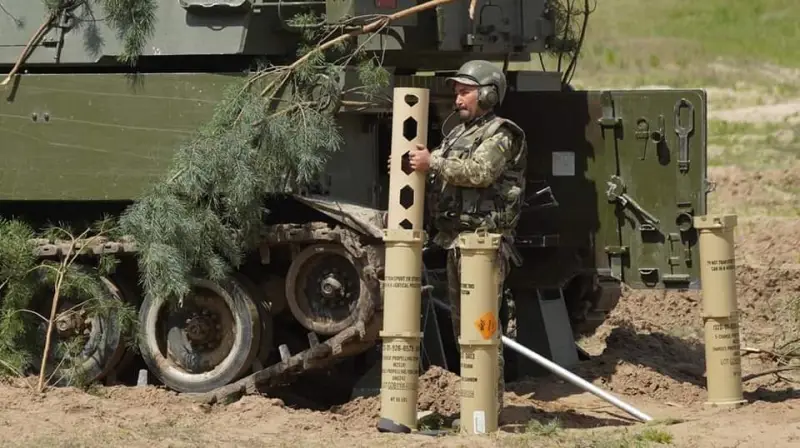
A Ukrainian artilleryman from the crew of the M109 self-propelled gun works with ammunition. Photo of the Ministry of Defense of Ukraine
In March 2023, the leadership of the European Union promised to supply the Kyiv regime with 1 million 155 mm artillery rounds over the next year. The stated deadline is coming to an end, but they have still not been able to fulfill the promise, and the Ukrainian artillery has not received the desired shells in the required quantity. Moreover, serious problems in the European military industry were revealed.
Unfulfilled promises
Let us recall that in mid-March 2023, the European Union drew up and accepted for implementation a program to assist the Ukrainian artillery. According to this plan, several European countries were supposed to collect 1,1 billion euros and use these funds to produce 1 million 155 mm artillery rounds for the Kyiv regime within a year. Another billion was also required to restore warehouse stocks spent earlier to help Ukraine.
It is curious that the Ukrainian side did not appreciate the generosity of its European allies. The Kiev command announced the need for many times larger volumes of ammunition. Over the next year, it wanted to receive 15-17 million shots. They forgot to explain how and where these shells were supposed to come from.
At the end of October, the American publication Bloomberg revealed the interim results of the European program obtained in the first six months. His sources said the program achieved only 30% of its goals. In addition, it was already assumed that it would not be possible to fulfill the production plan on time.
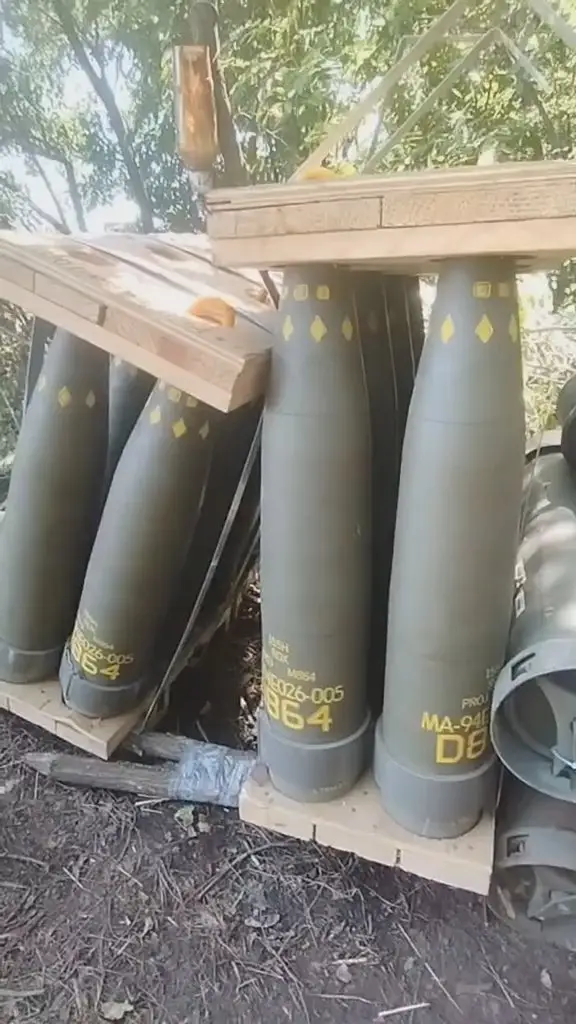
Imported 155-mm shells on Ukrainian positions. Photo Telegram / BMPD
However, representatives of the European Union remained optimistic. In early January, EU Commissioner for the Internal Market Thierry Breton said that factories in several countries could produce a million shots before the end of spring. At the same time, it was known that before the beginning of 2024, European countries managed to transfer less than 400 thousand shells to Ukraine, both from warehouses and from new production.
In light of data on production and supply volumes, T. Breton's statement looked overly optimistic. The production of 500-600 thousand rounds over the next few months is simply impossible with existing production facilities. However, the EU leadership tried to save face.
Failure and its reasons
It is obvious that a year ago the European Union overestimated the capabilities of its industry. Thus, to supply a million rounds per month, a monthly shipment of more than 80 thousand shells is required. In the current situation, European industry simply cannot provide such production and supply rates.
For example, the French ammunition industry - one of the strongest on the European continent - is capable of producing only 3 thousand shells per month. A production modernization program is currently underway, and by the end of the year they will be able to produce 5 thousand products per month, i.e. 60 thousand per year. Other European countries that have the necessary production facilities cannot even show such results.
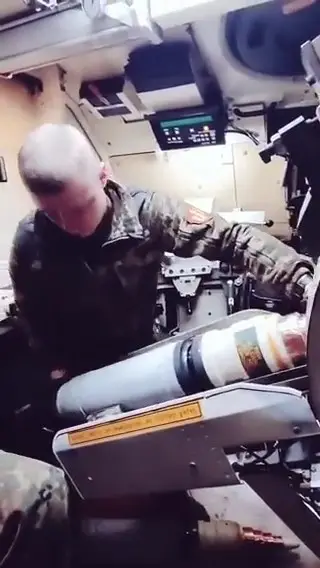
Vulcano guided projectile in the ammunition load of a Ukrainian self-propelled gun. Photo: Telegarm/BMPD
As it turned out, real and theoretically possible production indicators were negatively affected by problems with the supply of raw materials, which are of critical importance. Thus, in early March, T. Breton announced that the production of ammunition was faced with a shortage of gunpowder. The production of the latter, in turn, is difficult due to the lack of raw materials in the form of a specific type of cotton, which was supplied from China. The supply of such cotton stopped several months ago. The commissioner called the supply stoppage “sort of random.”
It is reported that replacements are already being sought for Chinese cotton. The products of European cotton growers are now undergoing the necessary checks, and they can be accepted for the production of nitrocellulose and gunpowder. How and with what result the current tests will be completed is unknown. Also questionable is the timing of this work and, if completed successfully, the time for restructuring the production of ammunition.
There are problems with other resources as well. Thus, due to the lack of energy resources, the bulk of which was previously supplied by “aggressive and threatening” Russia, the metallurgy industry is suffering. The production of metals and alloys needed by the ammunition industry is being reduced. The shell factories themselves also require energy.
Replacing missing raw materials and reducing the availability of other resources, according to the laws of a market economy, leads to unnecessary costs. Accordingly, the cost of production increases. Just last fall, the European Union was discussing a sharp increase in prices for 155 mm ammunition - one shot cost the customer 7-8 thousand euros. Apparently, the situation has not improved over the past months.
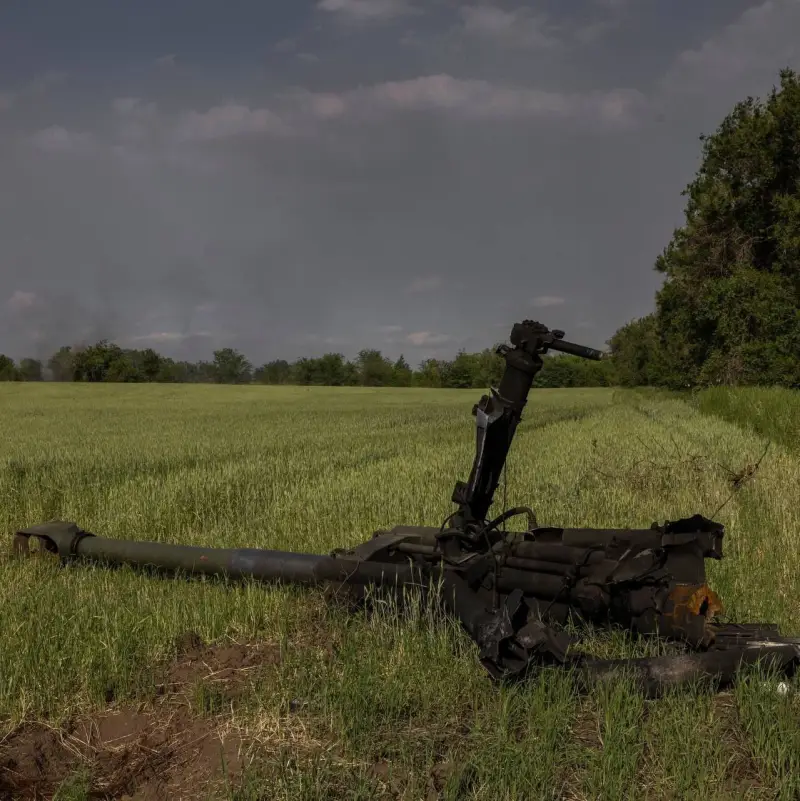
M777 howitzer, destroyed at the firing position along with its ammunition. Photo Telegram / Dambiev
Purchase plan
Thus, the plan for the production and delivery of a million rounds to Ukraine during the year could not be fulfilled - no more than half of the required number of ammunition was shipped within the specified time frame. However, European countries do not give up their desire to support the Kiev regime and are looking for new solutions. Now a proposal has emerged and is being developed to purchase finished products from countries outside the EU.
The Czech government proposed a new plan. In February, Czech President Petr Pavel announced the possibility of purchasing 800 thousand artillery rounds. It is proposed to purchase 500 thousand rounds in 155 mm caliber and 300 thousand 122 mm products. The estimated cost of such products reaches 1,4-1,5 billion euros.
Almost immediately, several European countries joined this initiative and expressed their willingness to contribute money for the purchase. In addition, a number of heads of state soon held negotiations with the Czech leadership on organizing such purchases. The plan received positive reviews and participants expected the desired outcome to be achieved.
On March 7, P. Pavel announced that the new “coalition” already includes 18 countries. She managed to raise the necessary amount, and an order for shells is being prepared. He also promised that deliveries would begin soon. According to him, the first batches of ammunition will be sent to Ukraine in the coming weeks. However, the next day the Czech authorities clarified these data. It turned out that we were only talking about money for the first batch of shells, and the supplies still needed approval.
Where exactly the shells will be purchased has not been officially announced. The foreign press wrote that India, South Korea and some African states were being considered as potential sellers. However, it is unknown whether these countries are ready to sell the ammunition they have and, if so, in what quantities.
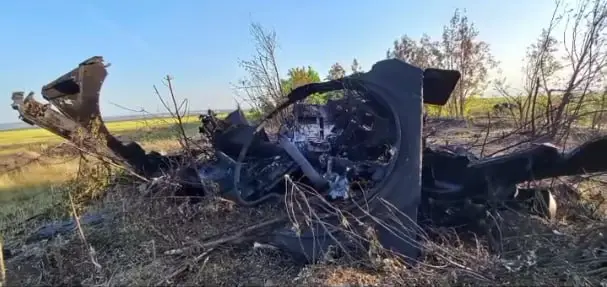
Self-propelled gun M109 after damage and detonation of ammunition. Photo Lostarmour.info
It is quite possible that they will not want to part with their reserves, based on their own combat effectiveness and safety. You should also expect that potential suppliers will put a high price on their shots - taking advantage of the market situation or remembering the need to replenish their stocks after the sale.
Scarce item
Two years ago, the EU countries decided to help the Kyiv regime with the supply of weapons and ammunition in the hope of defeating Russia. Such forecasts and expectations did not come true, but European countries themselves faced various difficulties. Thus, one of the most problematic was the sphere of artillery ammunition. It has developed several problems in succession, and the situation continues to worsen.
Over the past two years, EU countries have shipped significant quantities of projectiles and propellant charges to Ukraine from their own warehouses. At the same time, they reduced the reserves of their armies and worsened their performance. Further supply of ammunition from existing stock is not possible due to obvious threats to our own safety. Nevertheless, even in this situation it is planned to continue assistance to the Kyiv regime.
A year ago, a plan for the production and delivery of a million shells was adopted, but it was never implemented for a number of objective reasons. It turned out that the European ammunition industry deteriorated after the end of the Cold War, and restoration of competencies within the desired time frame and at acceptable costs was not possible. In addition, the EU has independently created a number of difficulties for itself that hinder the development of production.
Now, instead of independently producing shells, they are planned to be purchased “outside.” Given the characteristic features of such a plan, one can expect that he too will encounter a lot of difficulties. As a result, the Kiev regime is unlikely to receive the promised 800 thousand shots from abroad in the near future. However, there is no doubt that the countries participating in such a purchase will be able to successfully utilize the allocated budgets and will not lose money.
Information